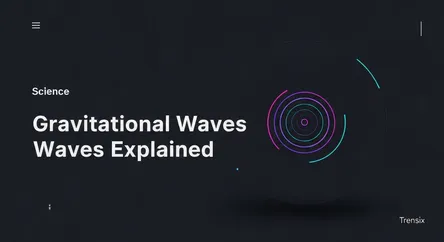Science
Gravitational Waves Explained

Discover gravitational waves, the invisible ripples in spacetime predicted by Einstein. Learn how they are detected and what they reveal about the cosmos.
What is it?
Gravitational waves are invisible ripples in the fabric of spacetime, traveling at the speed of light. Predicted by Albert Einstein in his theory of general relativity, they are generated by some of the most violent and energetic events in the universe. These include the collision of black holes, the merger of neutron stars, or the explosion of a supernova. As these waves travel across the cosmos, they stretch and squeeze spacetime itself, along with everything in it, though the effect is incredibly minuscule and requires extremely sensitive instruments to detect.
Why is it trending?
Gravitational waves are trending because of their groundbreaking first-ever direct detection in 2015 by the Laser Interferometer Gravitational-Wave Observatory (LIGO). This monumental achievement confirmed a century-old prediction of Einstein's and opened an entirely new way of observing the universe, known as gravitational-wave astronomy. Since then, numerous other detections have followed, providing unprecedented insights into cosmic events that were previously unobservable. The ongoing discoveries continue to make headlines and earn Nobel Prizes.
How does it affect people?
The detection of gravitational waves doesn't directly impact daily life, but it profoundly revolutionizes our understanding of physics and the universe. It provides a new tool to explore cosmic mysteries, allowing scientists to "hear" the universe's most dramatic events. This new field pushes the boundaries of technology and engineering, leading to innovations in lasers, optics, and computing. Ultimately, it reshapes humanity's cosmic perspective, offering a deeper connection to the fundamental workings of spacetime and gravity.